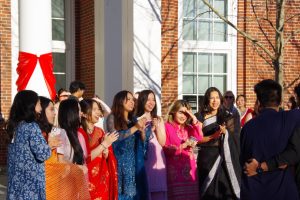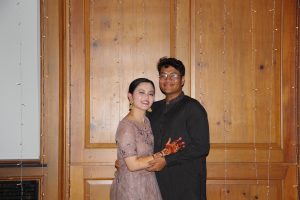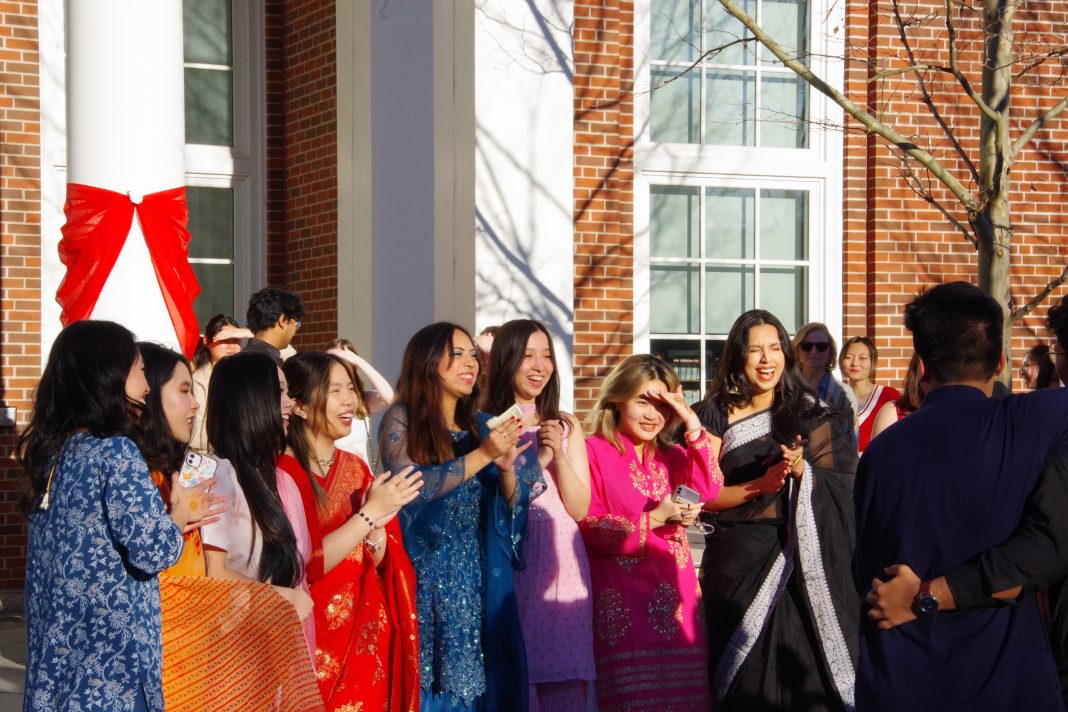The South Asian Student Society (SASS) successfully brought a vibrant celebration to DePauw University with its second annual Mock Shaadi, held on Saturday, April 6. This awaited event immersed students and faculty in the captivating traditions of South Asian weddings, providing an unforgettable journey into a rich and colorful culture.

Mock Shaadi, in translation, is a Mock Wedding, an event that recreates various wedding rituals and traditions commonly seen in South Asia. Originating from countries such as India, Pakistan, Bangladesh, Sri Lanka and Nepal, these weddings are characterized by their rich symbolism, elaborate rituals, and a festive atmosphere.
SASS brought Mock Shaadi to DePauw with the aim of allowing students to delve deeper into the rich traditions of South Asian weddings through engaging experiences. They meticulously planned and organized the event, successfully recreating the atmosphere of a real wedding. Among the most eagerly anticipated moments was the baraat procession, during which "groom" Animesh Dali ‘24 and his entourage joyfully made their way to the wedding venue in the Union Building.
Upon arrival, a beautiful exchange of symbolic gifts and gestures took place between the "groom" and "bride," Mai Le ‘24. She revealed, “People might not know this, but team bride and team groom got ready separately, and Animesh and I weren’t allowed to see each other until the walk. There were some close calls where we almost ran into each other, but my bridesmaids helped me keep a lookout and sneak around my own house.”

In addition to the entertainment, the festivities were enriched by the performances of Charlotte Zhao ‘25, X-Cell Dance Team, Ahnaf Labib ‘26, CSS (Claire Hoshi ‘26, Sy Alejandrino ‘25, Saki Yoshida ‘24), and NAACH (DePauw University South Asian Dance Society), all of whom contributed to creating a lively atmosphere at the festival. Moreover, students had the opportunity to wear traditional South Asian attire, get intricate henna on their hands, and enjoy delicious traditional foods.
“One major part of getting ready is drawing henna,” Le shared. “My bridesmaid, Zaheen, helped me with this from the Friday night before. Each South Asian country has its own henna traditions. One really fun aspect is that the groom’s initials would be hidden in the henna and he has to find it on the wedding day. Another significant part is the dresses. Brides don’t wear white wedding dresses but rather red ones. This is similar to what we do in my Vietnamese culture. These pops of color represent luck and auspiciousness, which I believe is a beautiful and positive message to bring on the festive day.”



